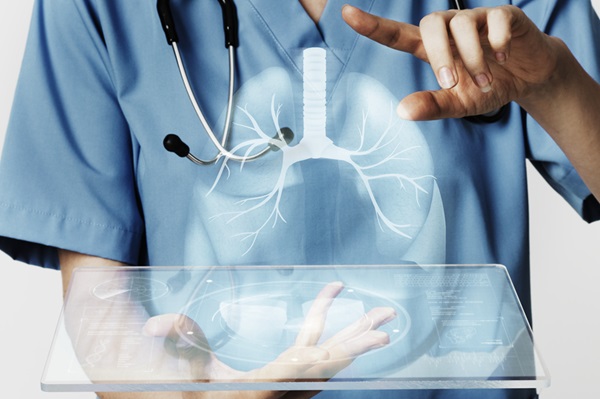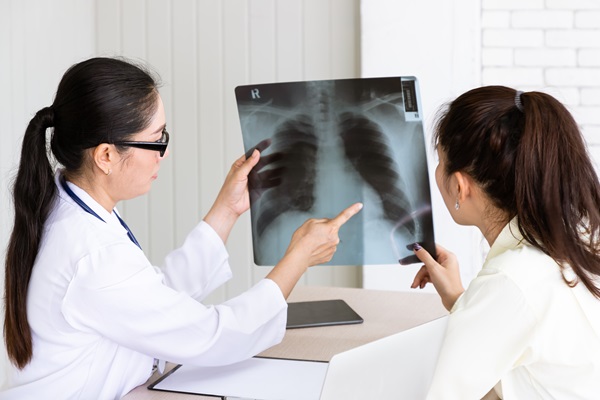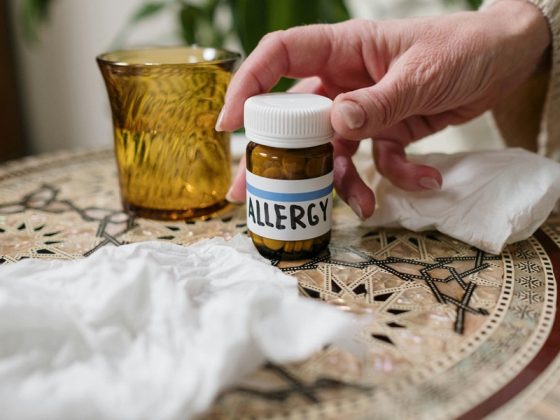Breathing, a fundamental and often overlooked aspect of our lives, plays a pivotal role in our overall health. We inhale and exhale thousands of times daily without even thinking, but the quality of our breath can greatly impact our well-being. In this comprehensive guide, we’ll explore the intricacies of healthy breathing and how it contributes to respiratory wellness.

I. Understanding Respiratory Health
The Anatomy of Breathing
The anatomy of breathing refers to the structure and function of the respiratory system, which includes the lungs, diaphragm, and airways. Understanding this anatomy is essential for comprehending how air is taken in, oxygenated, and expelled from the body during the breathing process.
Common Respiratory Disorders
Common respiratory disorders encompass a range of conditions affecting the lungs and airways, such as asthma, chronic obstructive pulmonary disease (COPD), and pneumonia. These disorders can disrupt respiratory wellness and require varied treatment approaches for management and relief.
The Impact of Poor Breathing on Health
The impact of poor breathing on respiratory wellness underscores its role in affecting overall well-being, from reduced oxygen intake to increased stress levels and compromised immune function. Addressing breathing habits can significantly enhance both physical and mental health outcomes.
II. Breathing Basics
The Mechanics of Breathing
The mechanics of breathing involve the intricate process of inhaling oxygen into the lungs and exhaling carbon dioxide. Understanding these mechanics is essential for grasping how the respiratory system supports vital functions like oxygenation and waste removal.
Diaphragmatic vs. Shallow Breathing
Diaphragmatic breathing involves using the diaphragm to draw air deeply into the lungs, promoting relaxation and optimal oxygen intake. In contrast, shallow breathing limits lung capacity, potentially causing tension and less efficient oxygen exchange.
The Role of Oxygen and Carbon Dioxide
The role of oxygen and carbon dioxide is crucial in respiratory wellness, where oxygen is taken in during inhalation to support cellular functions, while carbon dioxide is expelled during exhalation to maintain acid-base balance in the body.
III. Assessing Your Breathing
Self-awareness and Breathing Patterns
Self-awareness and breathing patterns are interconnected, with mindfulness enabling individuals to recognize and adjust their breathing habits. This awareness can lead to better stress management, improved relaxation, and enhanced overall well-being.
Tools for Monitoring Your Breath
Tools for monitoring your breath include devices like spirometers, which measure lung function and airflow rates, and smartphone apps that track breathing patterns and provide guided exercises. These tools help enhance awareness of respiratory health and support efforts to improve breathing techniques.
IV. Techniques for Healthy Breathing
Deep Breathing Exercises
Deep breathing exercises are essential for respiratory wellness, involving slow, deep breaths from the diaphragm to maximize oxygen intake and promote relaxation. These exercises can help reduce stress, increase oxygen flow throughout the body, and improve overall respiratory function.
Mindful Breathing and Meditation
Mindful breathing and meditation practices focus on cultivating awareness of each breath to promote relaxation and mental clarity. These techniques are integral to enhancing respiratory wellness, reducing stress, and fostering overall well-being.
Breathing for Stress Reduction
Breathing for stress reduction involves employing techniques like deep, diaphragmatic breathing to calm the nervous system and promote relaxation. This approach is effective in managing stress levels and enhancing overall respiratory wellness.
V. Respiratory Muscle Training
Strengthening the Respiratory Muscles
Strengthening the respiratory muscles involves exercises that focus on improving lung capacity and endurance. These activities can enhance overall respiratory function and support better oxygen intake during physical exertion.
Inspiratory Muscle Training (IMT)
Inspiratory Muscle Training (IMT) focuses on strengthening the muscles involved in inhalation to enhance respiratory efficiency and endurance. This training method can improve lung function and support better breathing capacity during physical activities.
VI. Posture and Breathing
Ergonomics and Its Impact on Breathing
Ergonomics and its impact on respiratory wellness consider how posture and workspace design influence breathing efficiency and comfort.
Breathing and Good Posture
Breathing and good posture are closely linked, as proper alignment of the spine and chest allows for optimal lung expansion and air intake.
VII. Environmental Considerations
Air Quality and Breathing
Air quality significantly affects respiratory health, influencing how effectively the lungs can extract oxygen and expel carbon dioxide.
Allergens and Respiratory Health
Allergens can impact respiratory health by triggering reactions in sensitive individuals, leading to symptoms like congestion, coughing, and difficulty breathing.

VIII. Nutrition and Breathing
The Connection Between Diet and Lung Health
The connection between diet and lung health highlights how nutrition impacts respiratory function and overall well-being. A balanced diet rich in antioxidants and nutrients supports lung health by reducing inflammation and promoting efficient oxygen exchange.
Foods that Promote Healthy Lungs
Foods that promote respiratory wellness and healthy lungs include those rich in antioxidants, such as berries and leafy greens, which help reduce inflammation and support respiratory function. Incorporating omega-3 fatty acids from fish and nuts can also contribute to lung health by promoting healthy cell membranes and reducing inflammation.
IX. Hydration and Its Role
Importance of Hydration for Respiratory Wellness
The importance of hydration for respiratory wellness underscores its role in maintaining optimal mucous membrane function and facilitating efficient oxygen exchange in the lungs. Adequate hydration supports respiratory health by keeping airways moist and promoting effective mucus clearance.
Best Fluids for Lung Health
The best fluids for lung health include water, which keeps airways moist and aids in mucus clearance, and herbal teas, which can have soothing and anti-inflammatory properties. Drinking plenty of fluids, such as water and electrolyte-rich beverages, supports hydration and helps maintain optimal lung function.
X. Avoiding Respiratory Irritants
Smoking and Its Effects on the Lungs
Smoking significantly damages lung function, leading to conditions like chronic bronchitis and emphysema. Quitting smoking is crucial for preventing further respiratory harm.
Minimizing Exposure to Pollutants
Minimizing exposure to pollutants involves reducing contact with harmful substances in the environment, which can compromise respiratory health.
XI. Exercises for Respiratory Wellness
Cardiovascular Exercise and Lung Capacity
Cardiovascular exercise enhances lung capacity by strengthening respiratory muscles and improving oxygen utilization efficiency. Regular aerobic activities like running or swimming can significantly boost overall lung function and endurance.
Yoga and Breathing
Yoga incorporates specific breathing techniques that promote relaxation, mindfulness, and improved respiratory function.
Tai Chi and Its Benefits
XII. Breathing for Specific Populations
Breathing Tips for Athletes
Breathing tips for athletes focus on optimizing oxygen intake during physical exertion, enhancing endurance and performance. Proper breathing techniques can help athletes maintain stamina and maximize athletic potential.
Breathing for Seniors
Pediatric Respiratory Health
Pediatric respiratory health focuses on ensuring optimal lung function and overall well-being in children.
XIII. Sleep and Breathing
Sleep Apnea and Its Impacts
Sleep apnea significantly impacts sleep quality and overall health by causing repeated interruptions in breathing during sleep. Addressing sleep apnea is crucial for reducing daytime fatigue, improving cognitive function, and lowering the risk of related health conditions.
Tips for Healthy Sleep and Breathing
Tips for healthy sleep and breathing include maintaining a consistent sleep schedule, creating a comfortable sleep environment, practicing relaxation techniques before bed, and ensuring good air quality in the bedroom.
XIV. Breathing and Emotional Health
The Connection Between Emotions and Breath
The connection between emotions and breath underscores their interplay in maintaining respiratory wellness. Emotional states can affect breathing patterns, emphasizing the importance of mindfulness practices to promote balanced respiratory wellness.
Breathing Techniques for Anxiety and Stress
Breathing techniques for anxiety and stress involve methods like deep diaphragmatic breathing and box breathing, which help calm the nervous system and reduce tension.
XV. Seeking Professional Help
When to Consult a Respiratory Specialist
Consult a respiratory specialist when experiencing persistent respiratory symptoms such as shortness of breath, chronic coughing, or wheezing, which may indicate underlying respiratory conditions needing expert evaluation and treatment.
Pulmonary Rehabilitation Programs

XVI. Breathing Gadgets and Tools
Peak Flow Meters
Peak flow meters are devices used to measure how well air moves out of the lungs, providing valuable information for managing asthma and other respiratory conditions.
Inspiratory Muscle Trainers
Inspiratory muscle trainers are devices designed to strengthen the muscles involved in inhalation, improving respiratory efficiency and endurance.
Nebulizers
Nebulizers are devices that convert liquid medication into a fine mist for inhalation, delivering medication directly to the lungs for effective treatment of respiratory conditions such as asthma or chronic bronchitis.
XVII. The Role of Breathing in COVID-19
COVID-19 and Lung Health
The critical link between the pandemic and respiratory wellness underscores the importance of maintaining lung health amid heightened concerns about respiratory infections and their long-term impacts. Prioritizing respiratory wellness is crucial for bolstering immunity and mitigating risks during global health challenges.
Breathing Exercises for COVID-19 Recovery
Breathing exercises for COVID-19 recovery focus on restoring lung function and strengthening respiratory muscles post-infection.
XVIII. Traveling with Respiratory Concerns
Managing Breathing on Flights
Managing breathing on flights involves techniques such as deep breathing exercises and staying hydrated to mitigate the effects of reduced cabin air pressure.
Coping with Altitude Changes
Coping with altitude changes involves acclimatization techniques like gradual ascent, staying hydrated, and practicing slow, deep breathing to adapt to reduced oxygen levels.
XIX. Holistic Approaches to Breathing
Integrating Breathwork with Holistic Medicine
Ayurveda and Breathing
Ayurveda and breathing are intertwined through practices like Pranayama, which emphasize the connection between breath, energy, and overall health. These ancient techniques aim to promote respiratory wellness, balance energy and support holistic healing in Ayurvedic medicine.
XX. Long-Term Benefits of Healthy Breathing
Aging Gracefully with Strong Lungs
Aging gracefully with strong lungs involves maintaining respiratory health through regular exercise, proper nutrition, and mindful breathing practices.
Improved Quality of Life
Improved quality of life is closely tied to respiratory wellness, emphasizing the importance of maintaining healthy lung function and overall well-being through lifestyle choices and proper medical care.
XXI. Breathing and Mental Clarity
Enhancing Cognitive Function with Good Breathing
Mind-Body Connection
The mind-body connection underscores how our emotional and mental states influence our physical health, including respiratory wellness. Practices like mindfulness and deep breathing foster this connection.
XXII. Breathing Exercises for Relaxation
Progressive Muscle Relaxation
Progressive muscle relaxation is a method involving systematically tensing and then relaxing muscle groups throughout the body to reduce physical tension and promote relaxation. This technique helps alleviate stress, improve sleep quality, and enhance respiratory wellness and overall well-being.
Box Breathing
Box breathing is a technique that involves inhaling deeply for a set count, holding the breath, exhaling fully, and then holding again before repeating the cycle. It’s used to promote relaxation, reduce stress, and improve focus by regulating breathing patterns.
XXIII. Conclusion
Breathing Your Way to a Healthier Life
Now that we’ve explored the myriad facets of healthy breathing and its profound impact on respiratory wellness, you have the knowledge and tools to enhance your breathing and, consequently, your overall health. Embrace these tips, practice them regularly, and watch how the simple act of breathing can transform your life.

